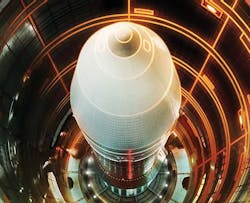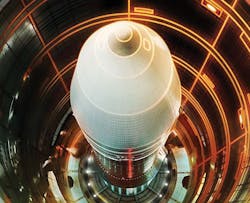2020 $718.3 billion DOD budget is up; eyes hypersonics, laser weapons, trusted computing
WASHINGTON — Leaders of the U.S. Department of Defense (DOD) are asking Congress for $718.3 billion in federal fiscal year 2020, which represents a 4.7 percent increase over this year’s military budget, according to budget figures released last month, which would represent another record year for U.S. defense spending.
The 2020 DOD budget request focuses on technologies like unmanned vehicles and automation; artificial intelligence (AI) and machine learning; hypersonic weapons; and directed-energy weapons in their fiscal 2020 budget request to Congress. Fiscal year 2020 begins next October 1.
Roughly 40 percent of the entire DOD budget goes for military electronics and related technologies, such as computers, sensors, communications, integrated circuits, electronic warfare (EW), surveillance and reconnaissance, and power electronics.
Modernizing the nation’s nuclear forces is a cornerstone of the record 2020 budget proposal for the U.S. Department of Defense.
Cyber security and trusted computing would receive $9.6 billion next year, highlighted by $3.7 billion for offensive and defense cyberspace operations; $5.4 billion for cyber security; and $61.9 million to modernize the DOD general-purpose cloud computing environment.
Unmanned and autonomous projects would receive $3.7 billion; artificial intelligence and machine learning would receive $927 million; hypersonic weapons development would receive $2.6 billion; and directed-energy technologies like laser weapons would receive $235 million, according to DOD documents.
Missile defense next year would receive $13.6 billion, including $1.7 billion for 37 SM-3 Aegis ballistic missile defense weapons; $1.5 billion for missile-defense studies; $1.7 billion for ground-based midcourse defense; $800 million for 37 Terminal High Altitude Area Defense (THAAD) missiles; and $700 million for 147 Patriot advanced capability (PAC-3) missile enhancements.
Space would receive $14.1 billion next year, including $3.7 billion for establishing the U.S. Space Force; $1.7 billion for four national security space launches; $1.8 billion for one GPS III secure navigation satellite; and $1.6 billion for space-based overhead persistent infrared surveillance.
New aircraft would receive $57.7 billion, including $11.2 billion for 78 F-35 joint strike fighters; $2.3 billion for 12 KC-46 aerial tankers; $2 billion for 24 F/A-18E/F carrier-based jet fighter-bombers; $800 million for six VH-93 presidential helicopters; $1.5 billion for six P-8A Poseidon maritime patrol and surveillance aircraft; $1.5 billion for six U.S. Marine Corps CH-53K heavy-lift helicopters; and $1.1 billion for eight F-15EX air-superiority jet fighters.
DOD also wants $34.7 billion for military surface ships and submarines, including $2.2 billion in research for the future Columbia-class ballistic missile submarine to replace Ohio-class boats; $2.6 billion for one Ford Class aircraft carrier; $10.2 billion for three Virginia-class fast attack submarines; $5.8 billion for three Arleigh Burke-class destroyers; $1.3 billion for one new frigate; $1.1 billion for two fleet replenishment oilers; $200 million for two towing, salvage, and rescue ships; and $447 million for two large unmanned surface vehicles.
For ground systems DOD wants $14.6 billion, including $1.6 billion for 4,090 joint light tactical vehicles (JLTVs); $2.2 billion to modify 165 M-1 Abrams main battle tanks; $400 million for 56 amphibious combat vehicles; and $600 million for 131 armored multi-purpose vehicles.
For munitions and weapons DOD wants $1.1 billion for 40,388 joint direct attack munitions (JDAMs); $1.4 billion for 10,193 guided multiple launch rocket systems (MLRS); $700 million for 125 RIM-174 SM-6 shipboard missiles; $400 million for 1,925 small-diameter bombs; $700 million for 9,000 Hellfire missiles; $600 million for 430 joint air-to-surface standoff missiles; and $200 million for 40 long-range anti-ship missiles (LRASMs).
Nuclear weapons modernization would receive $31 billion next year, including $3 billion for B-21 long-range strike bomber research; $2.2 billion for Columbia-class ballistic missile submarine research; $700 million for the Long-Range Stand-Off Missile; and $600 million for the next-generation land-based intercontinental ballistic missile (ICBM) — also known as the Ground-Based Strategic Deterrent (GBSD).

